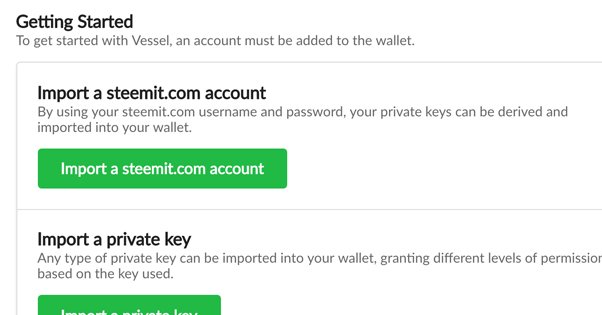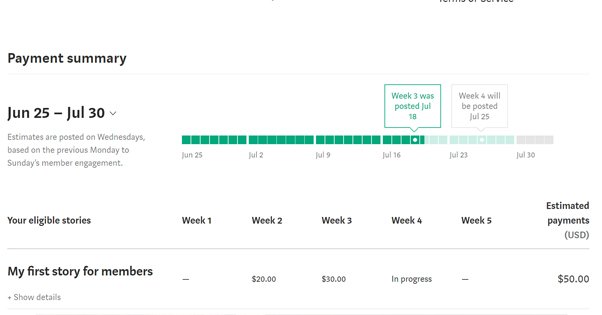Steemit vs Medium: Which Platform Is Better Than The Other?
Published by Drew Hendricks • Content Marketing • Posted April 22, 2019 ContentPowered.com
ContentPowered.com
The world of online blogging platforms is surprisingly cutthroat. I’m not even talking about the competition inherent in setting up your own blog. I mean the competition between platforms. If you want to set up a new blog, where do you turn? Do you go to WordPress.com? Blogger? Medium? Steemit? This is the first question you need to answer before you can start writing.
I’m going to look at two platforms which, if you read the title, you can guess are Medium and Steemit. They’re both popular, for different reasons, and choosing between them is pretty important. After all, it can be trick to migrate a following from one site to another without basically starting over.
What is Medium?
Medium is a free blogging platform founded by Evan Williams, one of the driving forces behind Twitter and the founder of Blogger. It was initially created as a companion for Twitter. You’ve seen the long tweet threads on Twitter where authors write lengthy posts split up by 140-280 characters at a time, I’m sure. Medium’s initial purpose was to give those users a different way to broadcast those lengthy thoughts to their audiences.
In the years since its founding in 2012, Medium has grown into a massive shared blog platform for a huge number of people. The connection to Twitter is largely defunct, outside of the ability to use your Twitter account to log in and make a Medium account.
While Medium remains a free blogging platform, no site can stay completely free of monetization, and Medium is no different. The site now locks a lot of content behind a paywall, utilizes native advertising and sponsorships for some kinds of content, and generally strives to monetize their platform without being too disruptive. Even the paywalled content is available to normal users on a limited basis, and the membership necessary to view everything is relatively cheap.
We’ve written about Medium before; it’s a solid platform for many bloggers, and while it has some drawbacks, so does every platform.
What is Steemit?
Steemit is a much newer blogging platform, created in 2016. It’s part of a trend that kicked off in response to the success of Bitcoin, where disruptive startups sprung up in virtually every industry trying to take advantage of the blockchain technology and cryptocurrency enthusiasts besides. Steemit is simply the biggest of the crypto-based blogging sites.
Steemit is relatively young, and as such, isn’t as refined in terms of features as other blogging platforms. What it is, however, is monetizable in an easy way. Steemit has their own cryptocurrency, Steem, which can be bought, sold, traded for other cryptocurrencies, and otherwise generally left to linger just like most crypto. Well, I can’t say that. There are thousands upon thousands of crypto-coins out there, and the vast majority of them aren’t worth a cent. Steem, as of this writing, is worth about 50 cents USD, though it has peaked as high as $8.57 back in January of 2018.
Steem is therefore attractive for a few reasons. For one, Steem is heavily integrated into the blogging platform directly. Bloggers earn Steem for their posts, and commenters can earn some as well for posting comments. The amount earned generally reflects the number of upvotes the content receives.
Compare and Contrast
If you’re looking for a new blogging platform, you want to compare the different platforms you find. I’ll be comparing these two directly, but you can use these categories to compare them both to other platforms you’re considering, like WordPress.
First up, let’s talk about ease of use. This is where the two platforms can be very different. Medium is set up to be incredibly easy to use. You can create an account in just a couple of clicks, authorizing a Twitter account or another social media profile OAuth method. You’re immediately given access to an author dashboard, where it’s trivial to make a new blog post. Click “New Story” up in the corner and you’re already in an editor with all of the features you need to get a blog post up and running in a few minutes longer than it takes to type it out.
By contrast, it’s a lot harder to get up and running on Steemit. First of all, signing up is not instant. Since accounts are inextricably linked to the blockchain process, they are very rigidly structured. You have two options: you can sign up for an account for free, at which point you need to wait 1-2 weeks for your request to process and your account to be created. Alternatively, you can buy an account directly through a third party processor. They list off five different sources for buying accounts, including Blocktrades, AnonSteem, and SteemConnect. It doesn’t cost a LOT to create an account – one of those apps quotes me 3 Steem, which is about $1.50 – but it’s still a fee.
There are, additionally, a lot of restrictions on Steem accounts. Accounts cannot be deactivated or deleted. You are unable to change your username, since your username is tied to all of your account activity in the Steem blockchain and cannot be changed retroactively. You can’t even edit Steemit posts after seven days, so one of the major benefits to evergreen content is simply removed.
You also cannot change the email address or phone number tied to your account. If you used a temporary or work email and changed jobs, well, you’re out of luck. If you change phone numbers, you’re out of luck.
Perhaps most crucially, your Steem password is equivalent to your wallet key. It’s a unique string that cannot be recovered and is considered a master key to your entire account. If you lose the password, you’re screwed and can no longer access your account. There is absolutely no way to recover a Steem password. The same goes for their additional keys; you have a Posting Key that is required to post, comment on posts, edit your posts, vote on posts, resteem – retweet – posts, or otherwise interact on the site. You also have other keys for converting Steem into actual money, voting for Steem community heads, and so forth.
This is a pretty big roadblock in the way of me ever recommending a site, since passwords are so commonly forgotten. If you’re not prepared to take very careful care of your Steem master key, you shouldn’t be using Steemit.
Next, you have to think about community guidelines whenever you’re talking about a community blogging platform. On Facebook, you have to comply with the terms of service and the community guidelines. On Twitter, you have their compendium of rules to control your behavior. How about Medium and Steemit?
Medium has several documents that you should familiarize yourself with. The first is the Medium Rules. This sets out basic rules about what you can and can’t post on the site. It’s the usual selection of stuff you might expect. No hate speech, no harassment, no threats. No doxing, no explicit content, no spam. You can’t sell unofficial sponsored spaces on your blogs, and you can’t sell bulk claps or other interactions. No copyright violations, no deception, etc. Interestingly, Medium also has explicit rules against cryptocurrency content, because the wave of crypto speculation has led to a ton of spam and a ton of scams. They have strict rules about what can and can’t be posted with regards to cryptocurrency.
Medium also has Editorial Guidelines you should read. These are guidelines about how to act, how to write, how to introduce yourself and what kinds of content tags you should use. These rules aren’t explicit follow-or-your-content-is-deleted rules, but rather they’re roles that disqualify you from monetization if you break them.
On top of all of this, Medium has the standard legal documents you would expect to find on any community blogging site. They have a privacy policy, they have terms of service, and all the usual legalese.
By contrast, Steemit has… none of this. Absolutely none of it. The Steemit FAQ simply says that the platform enforces no rules, but that users have put together an etiquette guide it’s recommended that you follow.
What’s in their etiquette guide? You can read it here. It’s a typical set of guidelines, like “don’t plagiarize” and “don’t spam”, but they’re community rules. The FAQ even makes it fairly clear that Steemit itself is not going to do anything about violations of their guidelines. Users who violate them can be downvoted and flagged, but those aren’t even necessarily penalties. Even plagiarism has no stated penalty in their FAQ; it simply warns that you can get in legal trouble for stealing content and violating copyright.
As with everything involved in Steemit, they’ve relied on users to create blockchain-powered bots and other solutions for guideline violations. They have a specific bot made to scan content for copyright violations – like Copyscape, but proprietary – and they have a team that fights abuse and spam, but it’s still all based on community power rather than any official Steemit policies or actions.
Heck, since your Steemit account cannot be deactivated, they can’t even effectively fight spam. Spammer accounts can’t actually be stopped.
Monetization is important when you’re looking to run a blog as well. As I mentioned, there are some specific guidelines for what kind of content can qualify for the Medium monetization plans. You need to enroll in the Partner Program, at which point you have the potential to earn money.
On Medium, posts that are eligible to earn will earn money based on the number of paying members who read the post, how long they spend reading it, and if they clap for it. Paying members pay $5 per month to read content behind the paywall, and their $5 is split up amongst the authors they read and engage with. This is a bit strange, because it means the more active a reader is on Medium, the less any creator earns from them. It encourages you to build a dedicated audience of people paying to read explicitly your content.
Medium has over 60 million monthly active readers, but I haven’t found recent statistics about how many of them are paid members or how much individual, active authors are able to make. I do know that authors tend to engage less on Medium than on Steemit, but that’s largely because even commenters on Steemit are able to earn from their comments.
Steemit, of course, is based entirely on the premise that you can make easy money – in cryptocurrency form – from your writing. Every post and every comment has a number next to it indicating how much that piece of content has made the author, pending payout. Even so, it’s a complicated system.
On Steemit, you earn a combination of Steem Power and Steem Dollars. When you post or comment, you earn both. Steem Dollars are a sort of stabilizing factor; when your post earns $1 worth of Steem, you get one Steem Dollar, which you can cash out later for $1 worth of Steem. Steem Dollars cannot be traded for USD, but Steem can; this is a way for Steemit users to have a fixed earning number, while also allowing prices to adjust for the current value of Steem. Meanwhile, Steem Power is a separate currency that is sort of an equivalent to community influence. A user with more Steem Power has more valuable upvotes and comments, and more valuable downvotes and flags. You can cash out Steem Power for Steem, but it’s stretched over a 13 week period, for some reason.
All of the usual hurdles of cryptocurrency are present with Steemit monetization. You don’t have a single penny you can spend unless you convert your Steem into something you can use at a store. Currency values fluctuate, so the price of your Steem can rise or fall, and it can leave you hanging. Steem Dollars only do so much to counteract this.
In fact, even reading posts from Steemit ambassadors show the drawbacks. After the initial wave of traffic from Steemit users, posts tend to only earn a few cents a day. Reading the most recent comment on that post indicates that the real way to make money is basically day trading on the difference in value between Steem and Steem Dollars. If you want to play a currency market, just… go to the currency markets? You don’t need to spend time blogging first.
Which is Better?
To be honest, I would say Medium is by far the better blogging platform. It’s more well known and it doesn’t have the anchor of cryptocurrency weighing it down.
Steemit is a novelty, with a relatively small userbase and a few real drawbacks, most notably the loss of any evergreen value potential. I would only recommend Steemit if you want to experiment with it or if you’re a huge crypto enthusiast. Otherwise, it just doesn’t have enough going for it.













